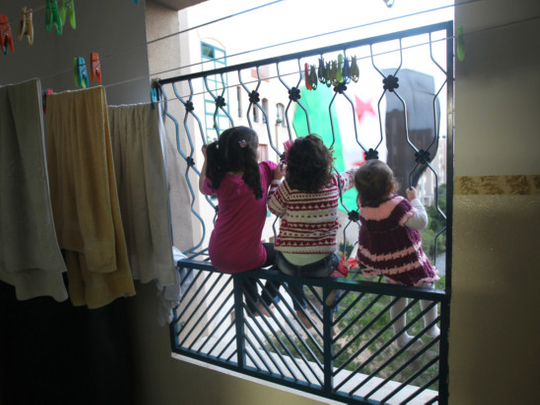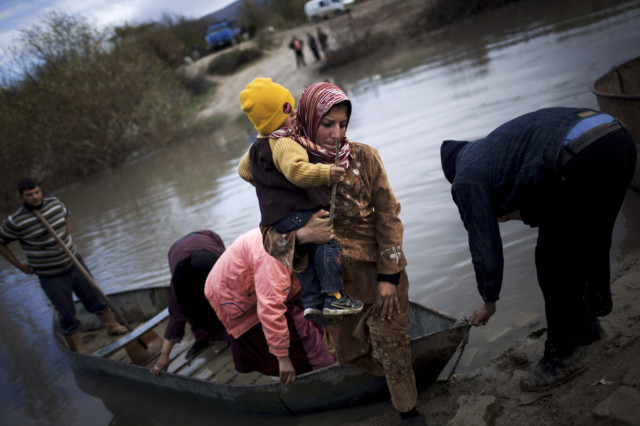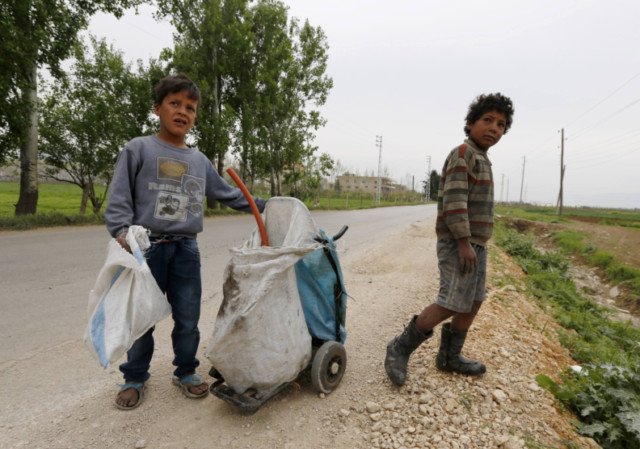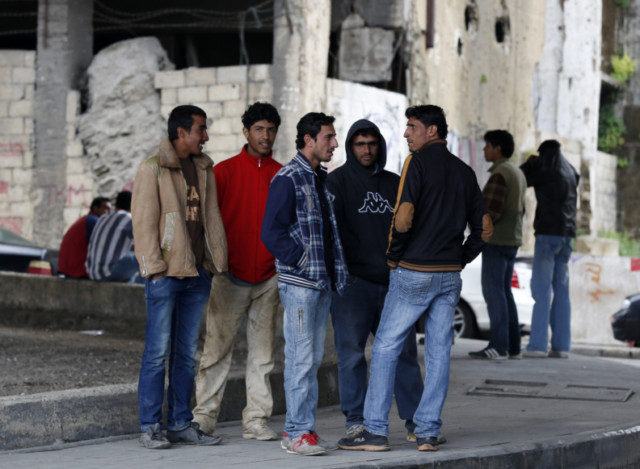
Beirut: About six weeks after the United Nations logged the one-millionth Syrian refugee, that figure has already climbed by 10 per cent to more than 1.16 million registered refugees. Including those awaiting registration, the UN is now tracking more than 1.38 million Syrian refugees.
And most regional governments estimate that the actual number of refugees hosted by Syria’s neighbours is much higher. The Lebanese government estimates that it has 1 million Syrians, both refugees and migrant workers, living in the country — more than double the 431,110 refugees recorded by the UN.
For the last two months, Syrians have been pouring out of the country at a rate of about 8,000 people per day, compared to 2,000 per day in December. If current trends continue, the number of refugees could triple by year’s end, according to UN officials.
Though much attention has been focused on Syrian refugees living in camps along the border, 74 per cent live outside camps, spread out among the host population. Lebanon’s Syrian refugee population, the second largest, is equivalent to about 10 per cent of its own population, but the government has not yet established official camps.
Outside camps, Syrians struggle to find work in countries already suffering high unemployment rates and rising housing costs, amid myriad other problems. These challenges are likely to prove a serious impediment to the professional and economic growth of a generation of Syrians.
“The Middle East has not been a stranger to forced displacement. What sets this emergency or crisis apart from others and makes it so dangerous is not only the sheer the number of people arriving, but also the rate at which they’re arriving,” says Reem Alsalem, a spokesperson for the UN High Commissioner for Refugees.
“Perhaps the only population that has been variously associated with camps is the Palestinian refugee population. Partially, this hesitation with establishing camps is connected to that. Palestinian refugee camps have been in the region for 60 years and still there is no solution,” she says.
Descending the career ladder
Prior to the Syrian uprising, Omar Farouq enjoyed an upper-middle class lifestyle in Aleppo, where he worked as an educational consultant while also studying for certificates in English and computer science. Each month he managed to save about half of his salary.
He fled Syria months ago and now lives in Istanbul, where he says he’s grateful for a job working as a grocer in a spice shop. The work barely covers his costs.
“Now I’m lucky if I don’t go into debt each month,” says Farouq, who uses a fake name. Speaking of the difficulty to find work more suited to his abilities, he adds, “None of my certificates matter because they aren’t valid here.”
Among the handful of Syrians who manage to find a job suited to their skills, let alone a job, many say they receive only half to a quarter the salary of locals working in comparable jobs.
Shortly after being mistaken as a protester and receiving a severe beating from Syrian Air Force intelligence, Adnan Abu Abdu moved to Turkey. He briefly studied Turkish and, with the help of his cousin, managed to land a job at an international marketing firm in Istanbul. Formerly a graphic design teacher, Abdu, who asked not to use his real name, says he is glad to have a job, but notes that Turkish employees receive about $2,000 per month for the same job for which he only receives $500.
“My boss didn’t make any excuses. He said, ‘I’ll give you $500 a month. If you develop yourself you can get more,’” he recalls. “For the longterm, I’m developing myself and the main purpose is that after the war there might be new markets between Syria and Turkey.”
For now he survives by living in a low-cost student dormitory on the edge of Istanbul.
Priced out of homes
According to a new report by CARE Jordan, the biggest expense for most refugees in Jordan is rent, a concern echoed by refugees throughout the region. Jordan is home to the largest population of Syrian refugees. The report found that in general, Syrians are paying above market price for low-quality homes throughout the country.
Sharing a border with Syria, Iraq, and Israel and the West Bank, Jordan has long been home to people displaced by a number of the region’s conflicts. In each conflict the surge of people has driven up housing and land prices. In some areas of Jordan, housing prices reportedly doubled amid the influx of Syrian refugees.
In Lebanon, just under 10 percent of the registered Syrian refugee population is living in Beirut, the Lebanese capital. Many of the urban refugees are either independently wealthy, and can afford to rent homes or stay in hotels, or move in with relatives who were already living and working in the cities.
Rental prices are high in Beirut, even for relatively affluent Lebanese, which means that most refugees have opted to settle in rural areas closer to the border with Syria. Most live either in small encampments of makeshift shelters built from scrap wood and plastic sacking or rent homes in villages or move in with Lebanese relatives.
But the presence of urban refugees has begun to test the patience of some Lebanese who complain of rising prices of basic foods and incidents of crime.
“I used to feel sorry for them when they first appeared, but now the beggars are everywhere and it’s become too much,” says Rasha Salem, a pharmacy employee in Beirut.
There are reports that some communities have imposed nighttime curfews to curb outbreaks of theft which they blame on an influx of Syrian refugees.
Involuntary dropouts
Throughout the region, one of the biggest concerns for Syrian refugee families is finding schooling for their children, who make up 48 percent of the Syrian refugee population and are unable to attend official schooling in their host countries. The longer children stay out of school, the less likely they are to eventually return, according to a March report from Save the Children.
In Jordan, CARE found that more than 60 percent of school-age children are not attending any classes, despite the availability of free schooling. For most parents, the auxiliary costs associated with schooling, such as transportation, supplies, and lunches, prove an insurmountable barrier.
“It’s a worry in its own sense, of course for the education and the future of those children, but we also think it’s a very clear of the levels of poverty that families are experiencing,” says Kate Washington, Syrian refugee response coordinator at CARE Jordan. “One of the things that is of concern … is the scope and scale of needs and the fact that they are increasing and we have absolutely no reason to suspect that they will stop increasing.”
In Istanbul, Mohammad Mawaheb Seraj now counts himself as one of the luckiest Syrian refugees. One year away from completing his bachelor’s degree in computer engineering, he got stuck in Turkey when fighting erupted in his home city of Aleppo this summer and decided to stay. After looking for menial work in malls and even as a trash sorter, he found a job as a web developer for a Japanese company through someone he met on CouchSurfing.com. He now telecommutes from Istanbul.
“I call my mother and she cries and cries and says I miss you, but don’t come back. If you stay there at least I know that if you go out of the house you won’t get shot,” he says.
Christian Science Monitor














